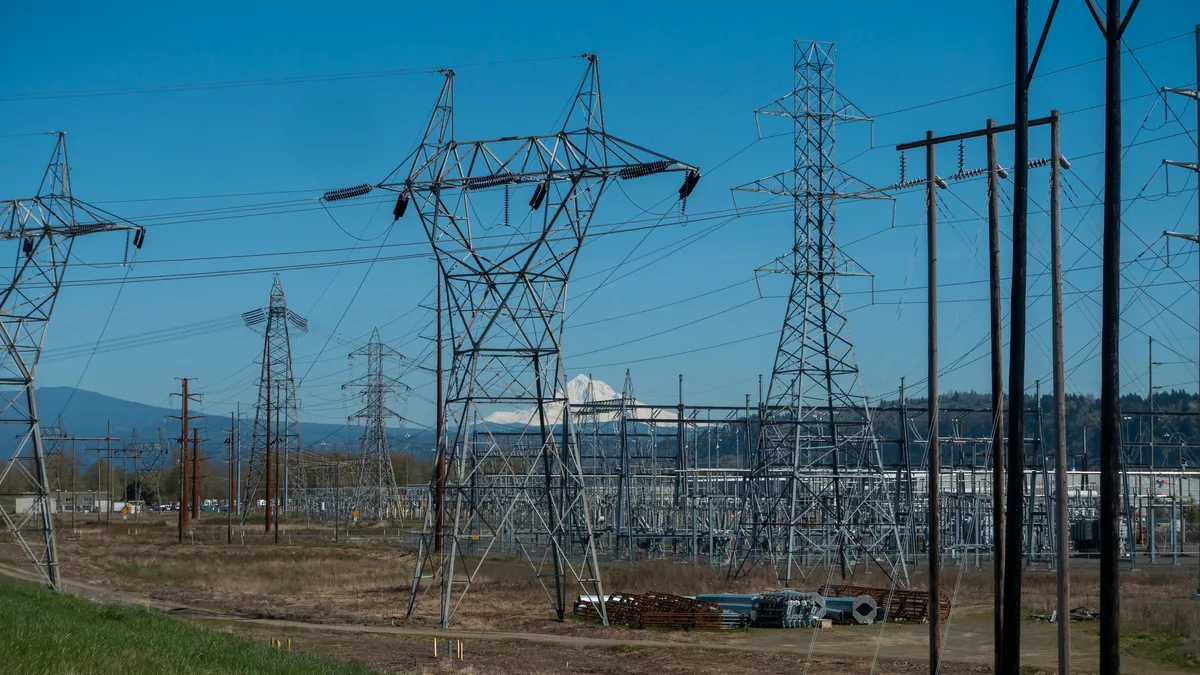Dive Brief:
-
A day-ahead market across the West could save the region up to $1.2 billion a year from operational and capacity efficiencies while increasing renewable energy output by more than 1,800 GWh, according to a study conducted for the California Independent System Operator.
-
A day-ahead market would produce 78% of the savings of a Western regional transmission organization, partly by removing transmission wheeling costs, expanding reserve sharing and opening up areas for increased electricity transfers for market optimization, according to a Nov. 18 presentation by Energy Strategies, which conducted the analysis, to the Committee on Regional Electric Power Cooperation, a group that includes Western utility regulators.
-
CAISO’s proposed day-ahead market is a key step toward a regional organized wholesale energy market that will include decarbonized energy resources and demand-side options, Vijay Satyal, Western Resource Advocates regional energy markets manager, said Tuesday. The advocacy group supports the proposal.
Dive Insight:
CAISO aims to issue a final “enhanced day-ahead market,” or EDAM, proposal in early December, with decisions by the grid operator and Western Energy Imbalance Market, or WEIM, boards slated for February, according to a draft proposal released Oct. 31. CAISO intends to start the voluntary day-ahead market in 2024.
The initiative builds on the WEIM, which by next year is expected to represent nearly 80% of the load in the Western Electricity Coordinating Council. The real-time WEIM helps utilities balance minute-to-minute changes in electricity supply and demand and produced $986.2 million in estimated benefits in the first three quarters this year for its participants in 10 states.
“EDAM will more efficiently and effectively integrate renewable resources and address significant operational challenges presented by a rapidly changing resource mix, emerging technologies, and the impacts of climate change,” CAISO said in the proposal.
Through those efficiencies, the EDAM would produce $543 million in annual operational savings and up to $652 million of capacity savings across the Western Interconnection, according to the Energy Strategies analysis.
A broad day-ahead market would allow the Western Interconnection’s 38 balancing areas to share reserves that are needed if demand outstrips supply, according to the report. A balancing area is required to maintain supply and demand within its territory.
“Due to the benefits of geographical diversity and netting out of load, wind, and solar errors across a large footprint, imbalance reserves for the EDAM scenario was 32% below the status quo,” Energy Strategies said in the presentation.
The analysis builds on a study Energy Strategies released last year for Western utility regulators that looked at the benefits of different market scenarios for the West, including an RTO.
Among its benefits, the EDAM would allow California to increase its solar and wind output by about 1,400 GWh in 2030, the model year for the analysis, according to the report.
Renewable energy production in Arizona and Oregon would increase by roughly 200 GWh in each state in the model year.
West-wide renewable energy curtailment would drop by about 0.8% and carbon dioxide emissions would drop by about 2.9 million tons a year, or 1.5%, according to the analysis.
The EDAM is critical to expanding the WEIM and access to day-ahead energy resources that would promote greater predictability and facilitate economic efficiencies in energy dispatch, Satyal said in an email.
“WRA and other public interest entities seek an EDAM that is inclusive, fair and transparently governed and independently operated in ways to leverage resource diversity of the West, maximize transmission usage and deliver decarbonized energy resources in a reliable manner,” Satyal said.
The Southwest Power Pool is also developing a day-ahead market for the West in an initiative called Markets Plus.














